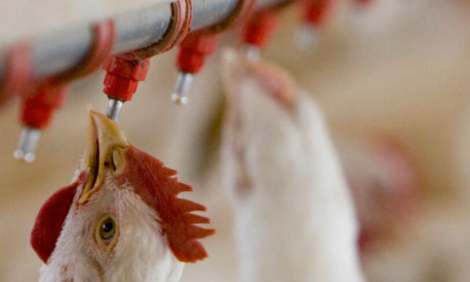



Residue Levels in Food Falling Across EU
EU - The amount pesticides or veterinary drug residues found in meat and food products across Europe is falling and the majority of products pose no risk to public health.According to a new report from the European Food Safety Authority on Chemicals in Food, the horse meat scandal in 2013 increased media attention on the safety of meat in particular and one issue that emerged was the use of veterinary drugs in food-producing animals.
However, the report says that the data seem to indicate that the situation is largely under control.
In 2013, countries across the EU analysed 80,967 samples for 685 pesticides.
The majority of samples (55,253 samples, 68.2 per cent) originated from the EU and two European Free Trade Association (EFTA) countries (Iceland and Norway); 22,400 samples (27.7 per cent) were from products imported from third countries. For 3,314 samples (4.1 per cent) the origin of the products was not reported.
The main results are:
- 97.4 per cent of the samples analysed fell within the legal limits. This represents a year-on-year increase in compliance since 2012 (from 97.1 per cent);
- 54.6 per cent were free of detectable residues;
- 1.5 per cent of samples clearly exceeded the legal limits, taking into account the measurement uncertainty.
Among the samples from EU/EEA countries, 57.6 per cent were free of measurable residues, and 1.4 per cent contained residues that exceeded legal limits.
The percentage of samples from third countries free of detectable residues was 46.2 per cent, with 5.7 per cent.
Pesticide residues within the legal limits were detected in 15.5 per cent of organic products (717 of the 4,620 samples analysed) whereas 0.8 per cent of the samples exceeded permitted levels.
In most cases the detected residues were related to pesticides that are permitted for organic farming, historic contamination by persistent environmental pollutants, or residues of substances that are not necessarily related to the use of pesticides but which may come from natural sources.
Baby food and animal products 92.7 per cent of samples of baby food were found to be free of detectable residues; 11 samples (0.7 per cent of the 1,597 samples analysed) exceeded legal limits.
The majority of samples of animal products (88 per cent of 8,257 samples) were free of measurable residues.
Residues of more than one pesticide (multiple residues) were found in 27.3 per cent (22,126) of the samples; multiple MRL that exceeded the permitted level were found in 385 samples (0.47 per cent).
The report says that traces or “residues” of both authorised and prohibited veterinary drugs, as well as contaminants are sometimes detected in live animals and in foods derived from animals, including meat, fish, eggs and dairy products.
These residues can pose a risk for public health if they are present in food.
Across the EU monitoring of the levels of these residues in food-producing animals and animal-derived foods takes place annually.
In June last year, EFSA published its latest report in this series, covering information from 2012 on residues found in bovines, pigs, sheep and goats, horses, poultry, rabbit, farmed game, wild game, aquaculture, milk, eggs and honey.
In 2012, there were just over 1,000 non-compliant samples, or 0.25 per cent, from over 425,000 total samples (these were “targeted” samples, i.e. those intentionally taken to test for illegal substances or substances above legal limits).
This is the second year in a row that non-compliance has fallen as a percentage, and since 2007 the general trend is downward.
Just under 0.5 per cent of all bovines produced for food (including meat and dairy) were tested in 2012 (this is a high rate compared with other animals).
Only 262 or 0.2 per cent of over 130,000 samples tested were non-compliant.
Heavy metals accounted for 78 non-compliant samples in bovines followed by antibacterials with 61 (12 of which were the antibiotic oxytetracycline).
Steroid-based antiinflammatory drugs (corticosteroids) accounted for 44 samples. Some media coverage during this period refer to cattle testing positive for thiouracil and clenbuterol.
The report says that cabbage, cauliflower or other “cruciferous” vegetables present in fodder can produce similar test results to the anti-thyroid agent thiouracil and may explain the 29 bovine samples “contaminated” by this steroid.
Also, across the EU only four non-compliant samples in bovines were for clenbuterol.
A total of 0.5 per cent of the EU pig population of 246 million in 2012 were tested for residues.
Of the 130,000 samples taken from pigs, 279 were non-compliant (0.21 per cent). Heavy metals accounted for 149 of them, the majority of which were for copper.
There were 60 samples with non-compliant levels of antibacterials, of which sulfamides were the most frequent substances reported. There were 31 non-compliant samples for steroids including the growth hormone nandrolone. Some media coverage has reported on pigs testing positive for antiobiotics.
IN 2012 the report says that a total of 36.5 million sheep and goats were produced with 0.06 per cent of animals being tested and over 23,000 samples taken.
There were 88 non-compliant samples, or 0.38 per cent of the total, mainly reported against antibacterials (37 samples, mainly sulfonamides) and heavy metals (21 samples, mainly cadmium).
There were also 11 non-compliant samples for anthelmintics, which are commonly used to fight worms.
Horse production in 2012 was close to 273,000, with 1.54 per cent of animals being tested and approximately 4,000 samples being taken.
Fifty samples or 1.3 per cent were non-compliant. Heavy metals (mainly cadmium) accounted for 36 samples while most of the others were non-steroid anti-inflammatory drugs.
Some 13 million tonnes of poultry were produced in 2012.
The number of samples taken reached 68,770, and just 54 samples (0.08 per cent) were non-compliant.
Antibacterials accounted for 23 (mainly doxycycline) and 13 were for anticoccidials, some of which were reported in the media.
Rabbit meat production in 2012 topped 170,000 tonnes and 3,471 samples were taken. Five samples were non-compliant without any noticeable trend.
Farmed game production swung widely between 2007 and 2012; in 2012 the EU produced 25,000 tonnes and 2,334 samples were taken. There were 24 non-compliant samples mainly for heavy metals (cadmium, mercury, and lead).
Wild game production was close to 210,000 tonnes in 2012. Of the 2,600 samples taken, there were 164 non-compliant samples.
The vast majority of these were for heavy metals (cadmium, lead and mercury). Lead poisoning, in particular, is a common topic of media attention on wild game.
The EU produced over 630,000 tonnes of farmed fish and seafood in 2012.
Out of the 8,264 samples taken, 51 (0.62 per cent) were non-compliant. Most of these (39 samples) contained non-compliant levels of dyes, particularly malachite green and crystal violet varieties.
In aquaculture, these dyes are sometimes used as fungicides.
In 2012, over 149 million tonnes of milk were produced in the EU and over 30,000 samples were taken, with 27 being found non-compliant.
The majority of non-compliant samples were reported for antibacterials (nine), anthelmintics (five) and mycotoxins (nine). Eggs – the EU produced 6 million tonnes of eggs in 2012.
From the 12,500 samples taken 23 were found to be non-compliant, of which four were for antibacterials, 13 were for anticoccidials and six were for dioxins and PCBs.
A total of 4,820 samples were taken from 215,101 tonnes of honey produced in 2012.
There were 44 non-compliant samples, of which 31 were for antibacterials such as streptomycin (one media outlet mistakenly referred to this substance as a “tree pesticide”).








